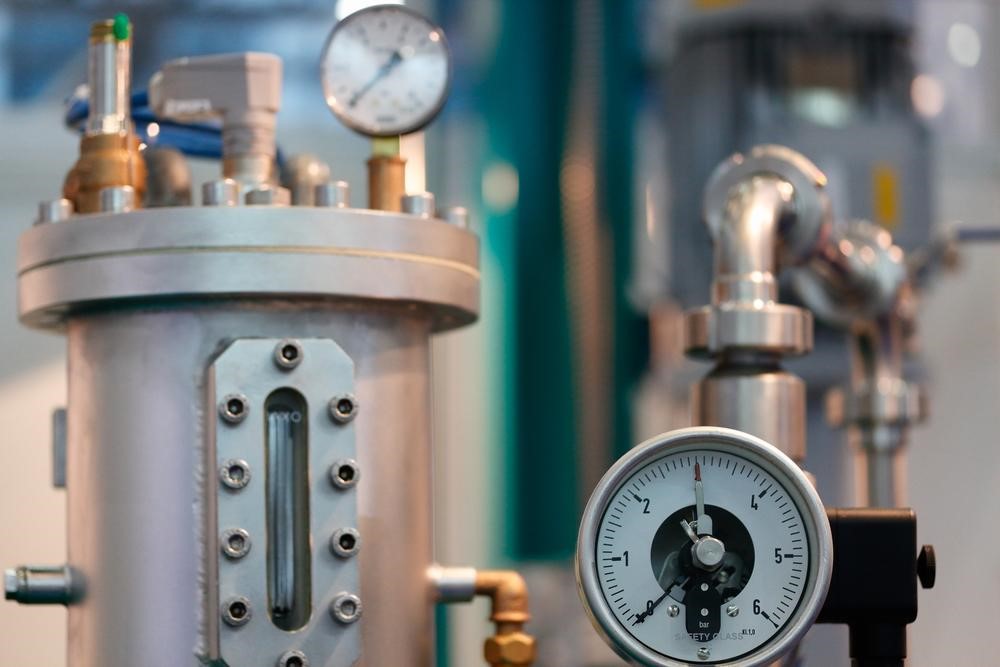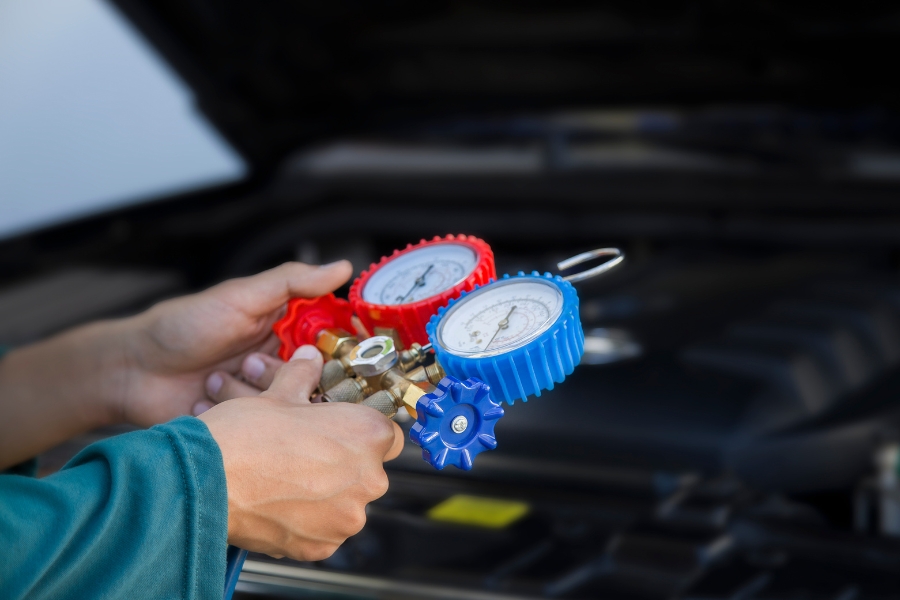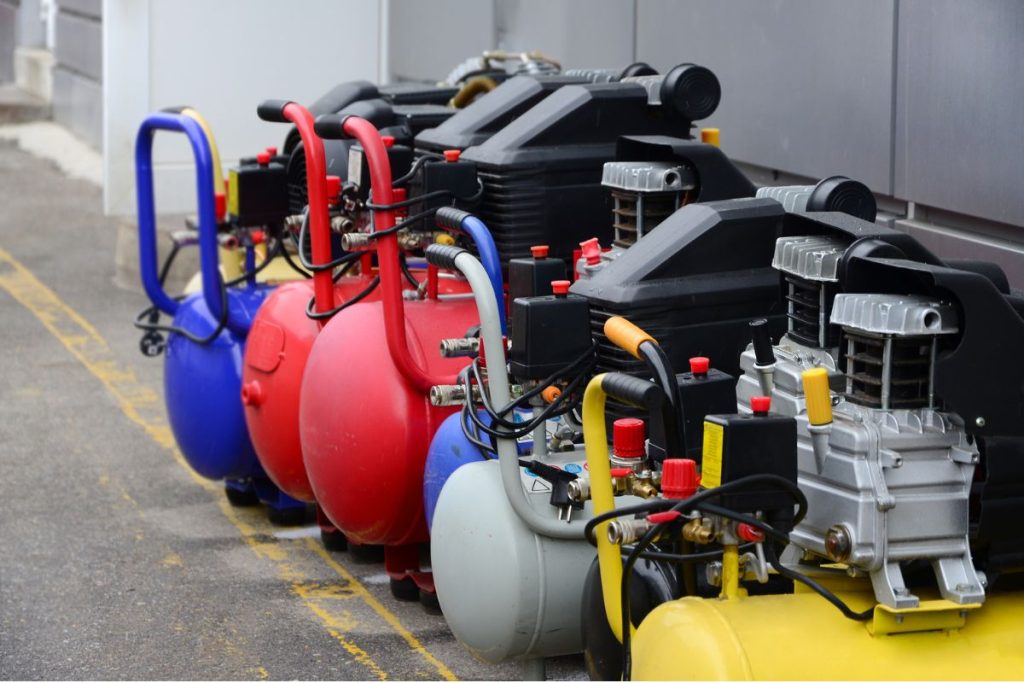Air compressors are useful for a wide range of applications, including industrial, manufacturing, construction, pharmaceuticals, construction and more. To get the most out of your air compressor, you’ll need to keep up with regular compressor maintenance over the years.
Not only does maintenance maximise compressor efficiency, but they can also give you advance warning of any potential future repairs so that you can better plan and budget for them.
The air compressor belts are among the more important components of the equipment, as it connects the air pump to the compressor motor. Without air compressor belts, your air compressor won’t be able to do its job.
If you notice squealing, whining, or rattling noises when your compressor is running, it is likely that there is a problem with the belt that will need to be addressed. In some cases, repairing the belt may be possible, while in others, you may be better off replacing it.
Read on to learn more about air compressor belts and our top tips for compressor maintenance.
The Role of Air Compressor Belts
In air compressors with belt drive, the belt runs through a series of pulleys connecting the air pump to the equipment’s motor. When the motor is running, the belt slides around the pulleys, driving the air pump.
The size and configuration of the pulleys determine the level of air pressure of which the compressor is capable.
Under normal conditions with a high-quality, functioning belt, the belt is tight around the pulleys. However, belts age over time and can become loose. They can also crack and fray, potentially leading to breakage.
Not only can this stop your air compressor from working properly, but a snapping belt can also cause further damage to the system, necessitating even more repairs. This is why compressor maintenance, including belt maintenance, is so important.
Compressor Maintenance – Why It Matters
Of course, keeping your air compressor running smoothly is an important goal, no matter what industry you are in.
Repairing an air compressor can be costly, and the system downtime can impact your bottom line even further due to delays and other complications. Staying on top of regular maintenance appointments for your air compressor can help keep everything running smoothly and alert you to any possible issues before they escalate into major problems.
An additional benefit of catching any problems early on is that they will likely be easier and less expensive to fix when they are just getting started.
Maintenance Tips for Air Compressor Belts
There are three primary components to air compressor belt maintenance:
Inspecting
The first step is to thoroughly inspect the compressor belts to verify their current condition.
Be on the lookout for any cracks, fraying or other damage. Don’t forget to check both the internal and external sides of the belt to ensure you don’t miss any damage that is not readily visible.
You may need to remove the belt from the compressor to adequately inspect it, depending on the configuration of the pulleys. Once you have identified any damage or weak areas in the belt, you can target them for repair or replacement.
Cleaning
It is important to keep the belts clean as well. Dust, grease, and other build-up can interfere with the proper functioning of your air compressor belt, reducing the overall efficiency of the system. You’ll need to remove the belt from the compressor to clean it properly.
Starting from the largest pulley in your system, work the belt off the edge so that you can unravel it from the rest of the pulleys. Clean the belt itself, as well as the surfaces and gears of the pulleys.
Once everything has dried thoroughly, replace the belt, ensuring a tight fit around the pulleys. Check out our air compressor service kits online to ensure you’re well-equipped to clean and service your air compressor.
Repairing or Replacing
Old, worn compressor belts can diminish the efficiency of your system and result in increased system downtime. If the damage is minor, you may be able to repair the belt to stave off replacement a bit longer. However, once the damage has begun, it will only continue to get worse as you use your air compressor.
In many cases, simply replacing the belt is a smarter option that will give you increased peace of mind that your compressor will be fully operational and efficient when you need it.
The Link Between Compressor Maintenance and Efficiency
A less obvious reason to keep up with compressor maintenance is that it boosts compressor efficiency.
When all of the components of your air compressor are working as they should, the system can run as efficiently as possible. This minimises wear and tear on the equipment and maximises its life span.
The more useful life you are able to get out of your compressor before needing to replace it, the more you can save.
Regular tune-ups will keep everything running as efficiently as possible. You’ll also reduce the need for repairs, compounding the savings even further.
Finally, with better efficiency, you’ll need to use your compressor less to get the job done, reducing your energy usage and keeping your utility bills to a minimum as well.
Keep Your Air Compressors Running Smoothly with Express Australia
Here at Express Australia, we are proud to be one of Perth’s leading suppliers of air compressors and their associated parts and components.
Our team is here to assist with all your air compressor needs, from the initial purchase to the ongoing maintenance and repair to the eventual replacement. We will be more than happy to answer any questions you may have about our air compressors and other products.
We’ll do everything we can to help you keep your air compressors working as they should over the years, whether for commercial or personal use. We’re always on hand to provide tips and guidance for air compressor maintenance, so don’t be shy about reaching out to us at any time for more information.
Get in touch today to get started.





